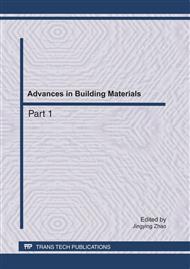p.361
p.366
p.371
p.376
p.380
p.385
p.389
p.394
p.398
Risk Analysis and Assessment for the Face Stability of Tunnel
Abstract:
The evaluation of the correct stability factor of tunnel is a critical element in the various design and construction phases of a tunnel excavated in difficult geotechnical conditions. An innovative, and well-applied, procedure for optimize the construction phase management is described in this article. The starting point of this procedure involves the verification of the results of numerical methods obtained from referenced analytical methods. In the first step of the procedure the results obtained through the analytical method are verified by means of a numerical method in order to evaluate the practical consequences in terms of development of deformations and plastic zone. In this manner, the assumed design risk is evaluated for the different methods and the solution that gives the best correspondence with numerical simulation is selected. Finally, residual uncertainties and parametric variations are incorporated in the analysis and Monte Carlo simulation is used to calculate the statistical distribution of the face-stabilizing pressure and the design value is selected on the basis of an acceptable probability of failure.
Info:
Periodical:
Pages:
380-384
Citation:
Online since:
May 2011
Authors:
Price:
Сopyright:
© 2011 Trans Tech Publications Ltd. All Rights Reserved
Share:
Citation:


